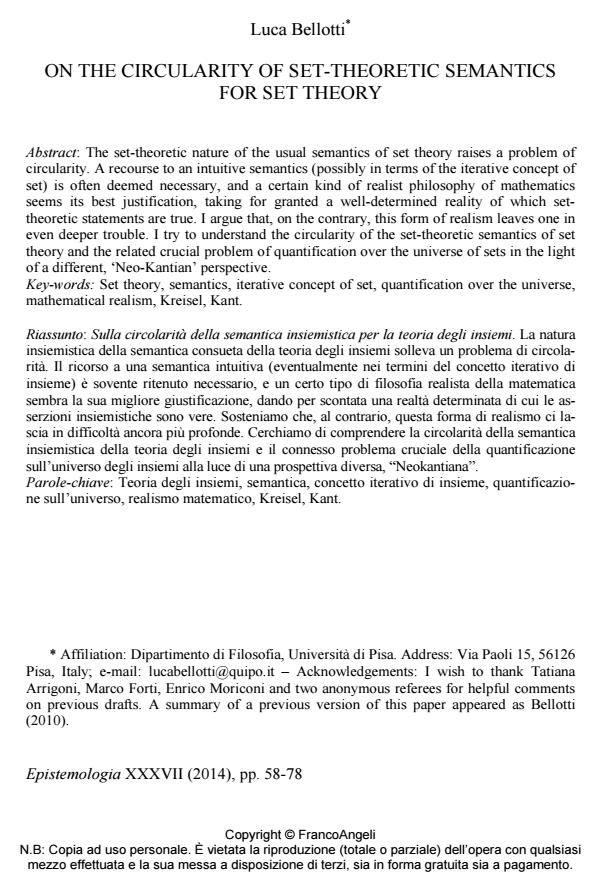On the circularity of set-theoretic semantics for set theory
Journal title EPISTEMOLOGIA
Author/s Luca Bellotti
Publishing Year 2014 Issue 2014/1
Language English Pages 21 P. 58-78 File size 635 KB
DOI 10.3280/EPIS2014-001004
DOI is like a bar code for intellectual property: to have more infomation
click here
Below, you can see the article first page
If you want to buy this article in PDF format, you can do it, following the instructions to buy download credits

FrancoAngeli is member of Publishers International Linking Association, Inc (PILA), a not-for-profit association which run the CrossRef service enabling links to and from online scholarly content.
The set-theoretic nature of the usual semantics of set theory raises a problem of circularity. A recourse to an intuitive semantics (possibly in terms of the iterative concept of set) is often deemed necessary, and a certain kind of realist philosophy of mathematics seems its best justification, taking for granted a well-determined reality of which settheoretic statements are true. I argue that, on the contrary, this form of realism leaves one in even deeper trouble. I try to understand the circularity of the set-theoretic semantics of set theory and the related crucial problem of quantification over the universe of sets in the light of a different, ‘Neo-Kantian’ perspective.
Keywords: Set theory, semantics, iterative concept of set, quantification over the universe, mathematical realism, Kreisel, Kant.
Luca Bellotti, On the circularity of set-theoretic semantics for set theory in "EPISTEMOLOGIA" 1/2014, pp 58-78, DOI: 10.3280/EPIS2014-001004